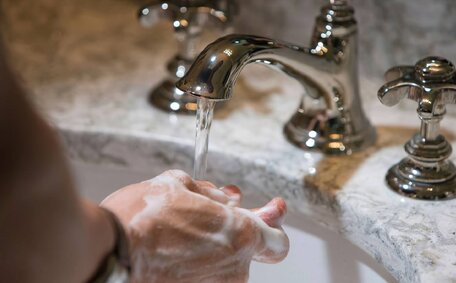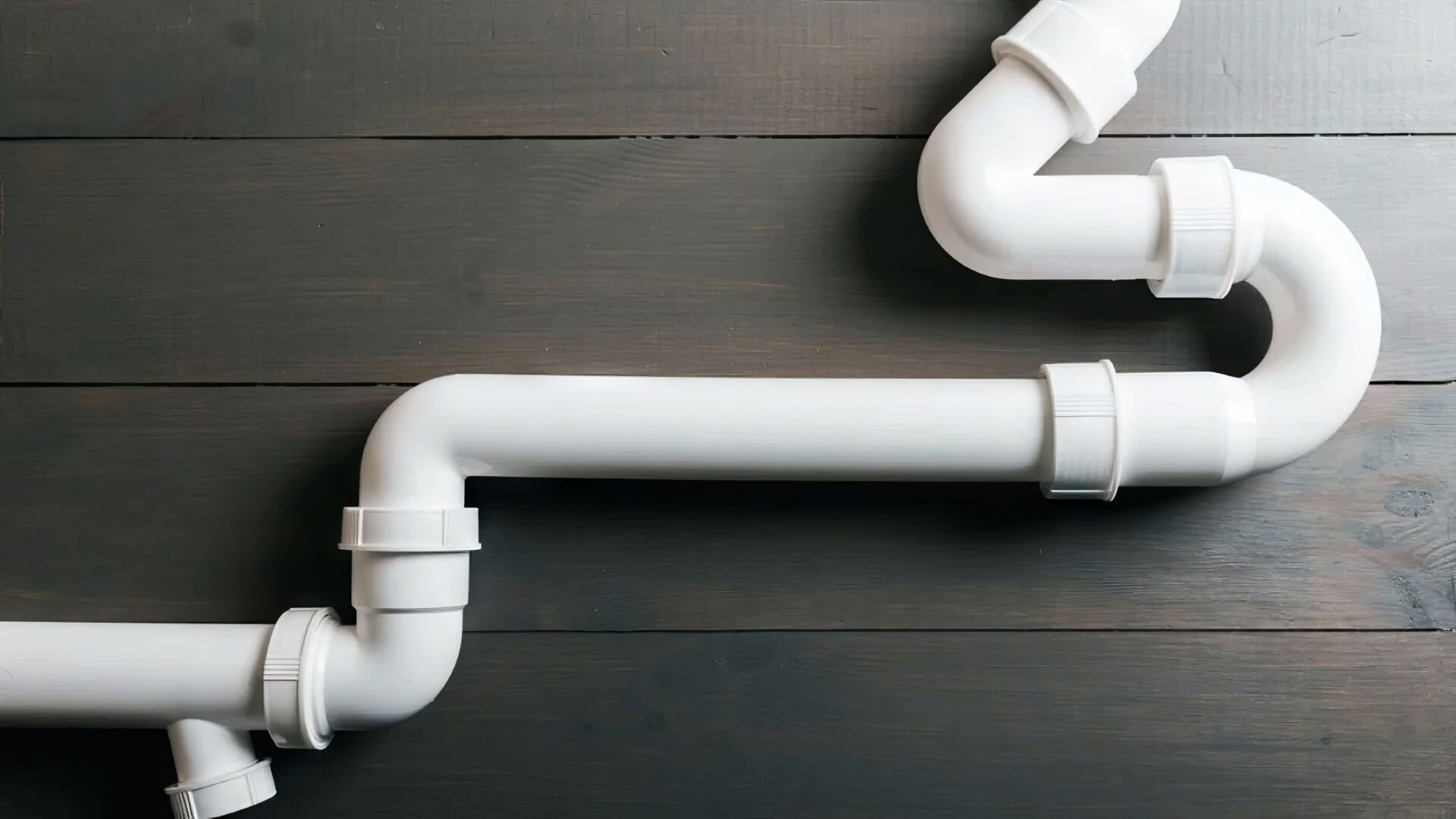The Environmental Impact of Traditional Pipe Repair Methods
Excavation-based traditional pipe replacement can profoundly affect the environment negatively.
Extensive digging and trenching damages landscapes and ecosystems. Heavy machinery releases substantial carbon emissions and other pollutants that significantly impact the environment. Furthermore, these excavated materials are often deposited in landfills, contributing to waste accumulation.
Specifically, excavation for repairing or replacing pipes disturbs soil, destroys plant life, and threatens local wildlife. Damage to tree roots can lead to the death of vegetation, which in turn may cause erosion and potential contamination of waterways and habitats.
Such heavy equipment not only scars the land but also compacts soil, hampering regrowth and adversely impacting the environment.
Such machinery releases greenhouse gases, such as carbon dioxide, accompanied by other hazardous fumes. For instance, an average backhoe is responsible for emitting more than 3,175 kilograms of carbon dioxide annually. The cumulative effect of daily truck and equipment operations results in a significant increase in emissions.
Discarded pipes and other debris go directly to landfills. Yearly excavation efforts, spanning miles of piping, add to the solid waste crisis by disrupting landscapes. Useful materials become buried instead of recycled or repurposed.
At Lalor Park Plumbing, we highlight the benefits trenchless technology offers by providing eco-friendly trenchless pipe repair services. This method achieves pipe restoration from the inside out without need for excavation. Get in touch to discover how our sustainable plumbing solutions can assist you in adopting eco-friendly practices.
How Pipe Relining Reduces Excavation and Landfill Waste
Modern pipe relining offers multiple advantages such as addressing blocked drains without invasive procedures, rejuvenating existing pipe systems from the inside out as a trenchless plumbing solution. This evolutionary work, like pipe lining, uses epoxy resin to create new piping within the existing, damaged pipe, offering considerable environmental benefits.
Pipe relining significantly reduces waste, eliminating the need for excavation and replacement on your property. There are no broken pipes, debris, or soil being carted away to landfills due to the non-invasive nature of pipe relining.
Pipe relining stands in stark contrast to traditional methods, being less invasive and generating significantly less waste with minimal digging and heavy machinery use. For example, repiping an average house can generate almost 907 kilograms of debris, which goes against eco-friendly practices. Pipe relining offers a solution for repairing damaged systems without contributing to landfill waste.
Lowering the Carbon Footprint Through Trenchless Pipe Lining
Trenchless pipe lining significantly reduces the carbon footprint of sewer pipes repairs without the need for extensive excavation which can be costly and damaging, resulting in 50-80% less emissions compared to traditional methods. With no need for heavy machinery for excavation, which can be quite resource-intensive, this approach significantly lowers fuel usage and its impact on the environment.
Diesel-powered equipment like backhoes, bulldozers, and dump trucks used in traditional replacements emit greenhouse gases, overloading the atmosphere. The EPA figures show that traditional repair of your sewer system activities generate more than 2 pounds of carbon emissions per linear foot.
With pipe relining, on the other hand, the reduction in equipment equals major cuts in carbon output. Lining materials and resins themselves contribute to a smaller carbon footprint as well.
At Lalor Park Plumbing, we specialise in plumbing drain solutions, utilising pipe relining and other trenchless techniques across all our services - drain cleaning, pipe repairs, sewer rehabilitation and more. Contact us to explore our sustainable relining solutions and how they can meet your plumbing needs.
Preserving Natural Resources and Landscapes
Pipe relining plays a critical role in preserving natural resources such as water and soil, greatly benefiting the environment. By repairing and replacing your sewer and water pipe systems through relining, existing landscapes are preserved and further disruption is prevented.
Pipe relining techniques that don’t need excavation offer substantial environmental benefits and are known for avoiding digging that could harm tree roots, compact soil, or threaten local ecosystems.
Pipe relining helps conserve water, an invaluable resource, by preventing leaks from failing pipes. Research, including EPA statistics, indicates that in Australia, over 20% of piping systems leak nearly 90 billion litres annually. Relining effectively halts this waste.
For clients, the non-destructive process reduces expenses, ensuring landscaping, paving, pathways, and other features stay intact – reach out to us today to learn more.
The process of repairing your property with trenchless methods often saves time, This method allows areas to become usable again within hours, not days.
The Durability and Leak Prevention of Relined Pipes
Pipe relining represents the strengths of trenchless repair methods, providing exceptional durability and leakage prevention, with relined pipes lasting 50-100 years. By restoring pipes from the inside out, the structural integrity and flow capacity are renewed long-term, addressing persistent pipe problems.
Relined pipes are a highly effective method of repairing, which eliminates leaks and prevents issues including wasted water resources and contamination risks. Studies show over 30% of homes have leaks in their sewer lines wasting nearly 200 litres per day. Lining seals cracks and restores a smooth surface to the pipe interiors to stop this loss.
Repairing damaged pipes becomes efficient as the trenchless epoxy resins create a robust barrier inside that withstands corrosion, roots, pressure and other forms of damage. Materials like cast iron that are prone to cracking and leaks become fortified from the inside out.
Showcasing significant environmental and economic savings, the benefits pipe relining offers provide an advantage over traditional methods with its eco-friendly approach. The long-lasting repairs conserve water and soil while avoiding the costs and waste of full replacements. Contact Lalor Park Plumbing to learn more about leak and damage prevention through pipe relining.
Pipe Relining Technology and Innovation
At Lalor Park Plumbing, we utilise technology pipe relining in our cutting-edge maintenance for our trenchless plumbing services. Pipe relining, also known as curedinplace pipe (CIPP), is an innovative system that can extend the life of an old pipe infrastructure without needing to replace or remove it.
Modern pipe relining employs bespoke epoxy resin liners that bond to the insides of damaged pipes, significantly extending their service life. As the liner cures and hardens, it essentially forms a new pipe within the old one, restoring structural stability and eliminating leaks or clogs you would otherwise have to worry about.
When considering pipe relining vs traditional excavation methods, it is notable that pipe relining is a cost effective option that causes minimal disruption, is faster, less invasive, more durable, and better for the environment. The technology permits the rejuvenation of deteriorated plumbing systems in situ, extending the life your pipes, thus preserving landscapes while minimising construction waste.
Pipe relining aligns with sustainability objectives, engineered to extend life your plumbing infrastructure, ensuring pipes last for 50-100 years. The long-term infrastructure solution prevents future excavations or replacements, hence limiting impacts linked to these activities.
From a thorough CCTV inspection process to leak detection, Lalor Park Plumbing offers trenchless pipe relining for all residential and commercial applications. Reach out to us today to discover more about how our CIPP technology can effectively resolve your plumbing issues.
Case Studies of Eco-Friendly Pipe Relining Projects
At Lalor Park Plumbing, we have worked on numerous eco-friendly pipe relining projects that highlight the sustainability and efficiency of trenchless repairs.
Case Study: Apartment Block Sewer Reline
A 50-unit apartment complex required emergency sewer repair assistance for their sewer pipe after invasive roots led to sewage backups. Rather than traditional dig-and-replace which would have destroyed landscaping and a playground area, our team opted for a trenchless approach.
Our team used modern CIPP pipe relining technology to rehabilitate 125 metres of damaged 200mm iron sewer piping without digging. CIPP technology excelled by creating new barrier pipes inside the damaged ones, sealing cracks and preventing further root damage.
Not only did pipe relining fix the pipes, it conserved existing greenery and was very effective in saving substantial removal costs. The project prevented nearly 8 tonnes of waste from landfills.
Heritage Building Plumbing Upgrade
A 1930’s heritage house needed plumbing repairs but excavation was not an option due to landmarked gardens.
We used trenchless pipe bursting to replace 60 metres of deteriorating clay drain lines with new PVC piping. This bursting method effectively replaces old pipes by fracturing them underground and simultaneously drawing through new pipes.
The restored drainage will last for generations without leaks.
For eco-friendly pipe relining services, connect with Lalor Park Plumbing on 1300 349 338 or via [email protected].






